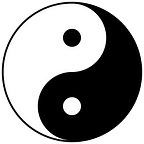Caravaggio, The Calling of Saint Matthew, 1600
Caravaggio is one of the most influential Italian painter of the Early Baroque. He is especially well known for his dramatic lighting effects. The technique he used to create these was something he guarded like a trade secret. As a result, legends surrounded the painter even during his lifetime
Caravaggio employed close physical observation with a dramatic use of chiaroscuro that came to be known as tenebrism. He made the technique a dominant stylistic element, darkening shadows and transfixing subjects in bright shafts of light. Caravaggio vividly expressed crucial moments and scenes, often featuring violent struggles, torture, and death. He worked rapidly, with live models, preferring to forgo drawings and work directly onto the canvas. His influence on the new Baroque style that emerged from Mannerism was profound.
The Calling of Saint Matthew is a masterpiece depicting the moment at which Jesus Christ inspires Matthew to follow him. It was completed in 1599–1600 for the Contarelli Chapel in the church of the French congregation, San Luigi dei Francesi in Rome, where it remains.
The painting depicts the story from the Gospel of Matthew (Matthew 9:9): “Jesus saw a man named Matthew at his seat in the custom house, and said to him, “Follow me”, and Matthew rose and followed Him.” Caravaggio depicts Matthew the tax collector sitting at a table with four other men. Jesus Christ and Saint Peter have entered the room, and Jesus is pointing at Matthew. A beam of light illuminates the faces of the men at the table who are looking at Jesus Christ.
